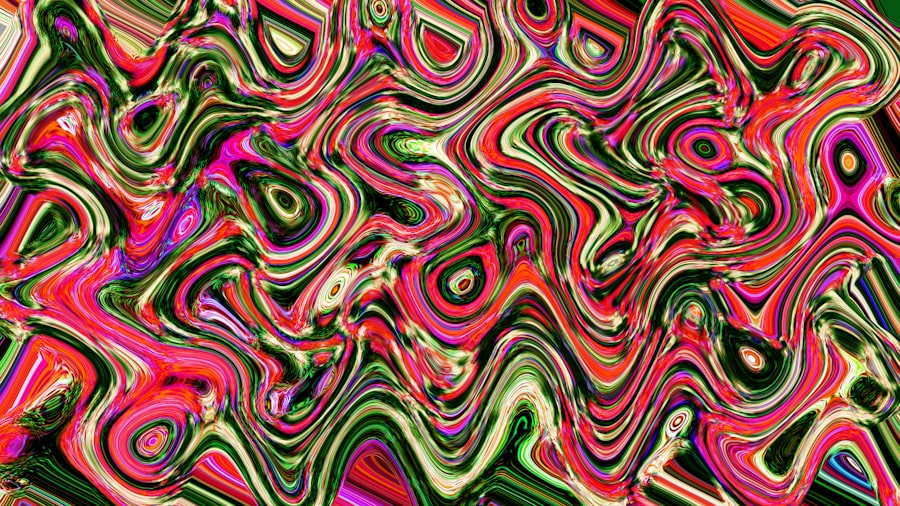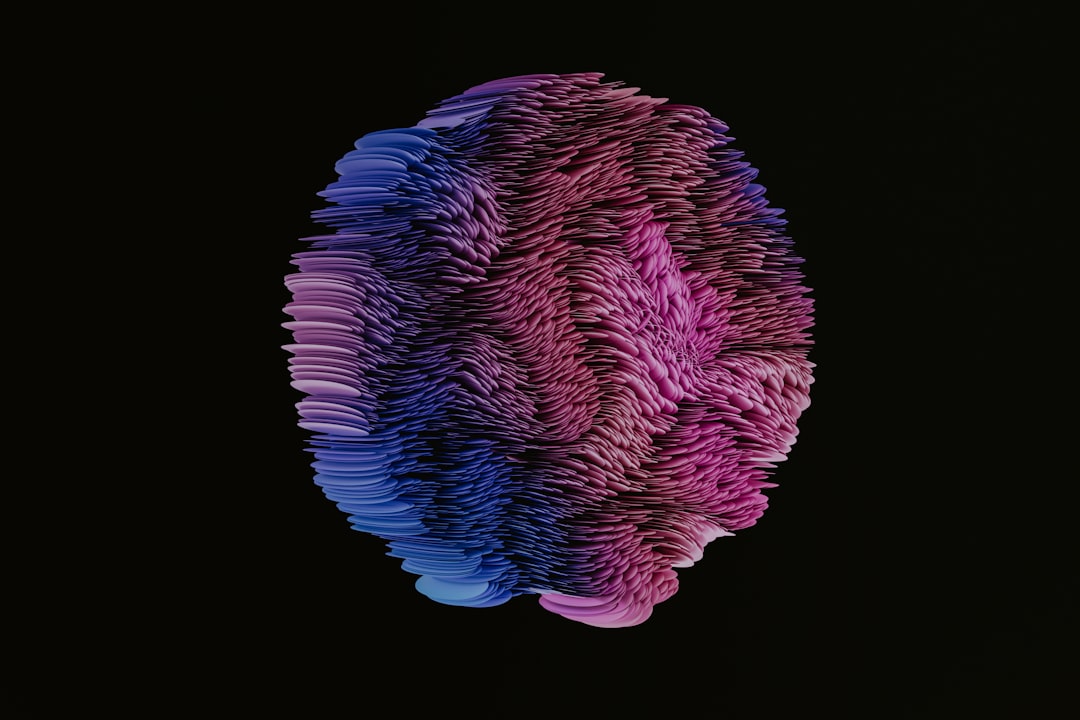Hallucinations are fascinating phenomena that can profoundly affect an individual’s perception of reality. You may have encountered the term in various contexts, from literature to psychology, but what exactly are hallucinations? At their core, they are sensory experiences that appear real but are created by the mind.
These experiences can involve any of the senses—sight, sound, taste, touch, or smell—and can occur in a variety of situations, from sleep deprivation to mental health disorders. Understanding hallucinations is crucial not only for those who experience them but also for the broader field of psychology and neuroscience. As you delve deeper into the world of hallucinations, you may find that they are not merely symptoms of mental illness but complex experiences that can reveal much about human perception and cognition.
The study of hallucinations opens a window into the intricate workings of the brain and how it interprets sensory information. By exploring this topic, you can gain insights into the nature of reality itself and how subjective experiences shape our understanding of the world around us.
Key Takeaways
- Hallucinations are sensory experiences that occur in the absence of external stimuli and can affect any of the five senses.
- Perception plays a crucial role in the occurrence of hallucinations, as the brain’s interpretation of sensory information can be altered.
- The brain’s role in hallucinations involves complex interactions between different regions and networks, including the sensory and cognitive areas.
- Neurotransmitters such as dopamine and serotonin can influence the occurrence of hallucinations, highlighting the importance of brain chemistry in understanding these experiences.
- Hallucinations are closely linked to mental health conditions such as schizophrenia and can have significant impacts on the individual’s well-being and daily functioning.
The Role of Perception in Hallucinations
Perception plays a pivotal role in the experience of hallucinations. When you perceive something, your brain processes sensory information and constructs a representation of reality. However, in the case of hallucinations, this process becomes distorted.
You might see or hear things that aren’t there, leading to a disconnection between your internal experience and external reality. This dissonance can be unsettling, as it challenges your understanding of what is real and what is imagined. The subjective nature of perception means that two individuals can experience the same stimulus in vastly different ways.
For instance, while one person may hear a voice calling their name, another may not perceive anything at all. This variability highlights the complexity of human perception and suggests that hallucinations may serve as a window into the mind’s inner workings. By studying how perception influences hallucinations, researchers can better understand the mechanisms behind these experiences and their implications for mental health.
Understanding the Brain’s Role in Hallucinations

The brain is at the center of understanding hallucinations, as it is responsible for processing sensory information and generating perceptions. When you experience a hallucination, specific areas of your brain become activated in ways that differ from typical sensory processing. For example, research has shown that the auditory cortex may be involved when someone hears voices, even though no external sound is present.
This suggests that hallucinations arise from the brain’s internal activity rather than external stimuli. Moreover, the brain’s ability to create vivid sensory experiences without external input raises questions about the nature of consciousness itself. You might wonder how your brain distinguishes between real and imagined experiences.
This distinction is crucial for navigating daily life, as it allows you to interact with your environment effectively. However, when this mechanism falters, it can lead to profound confusion and distress. Understanding how the brain generates hallucinations can provide valuable insights into both normal cognitive processes and pathological conditions.
The Influence of Neurotransmitters on Hallucinations
| Neurotransmitter | Effect on Hallucinations |
|---|---|
| Dopamine | Excess levels may contribute to auditory hallucinations in schizophrenia |
| Serotonin | Low levels may be associated with visual hallucinations |
| Glutamate | Imbalance may lead to hallucinations in various psychiatric disorders |
| GABA | Deficiency may be linked to hallucinations in certain conditions |
Neurotransmitters play a significant role in regulating mood, perception, and cognition, making them essential players in the experience of hallucinations. Chemicals such as dopamine and serotonin are particularly influential in this regard. For instance, an excess of dopamine in certain brain pathways has been linked to auditory hallucinations commonly experienced in schizophrenia.
When you consider how these neurotransmitters affect your mood and perception, it becomes clear that they can also influence the likelihood of experiencing hallucinations. Additionally, fluctuations in neurotransmitter levels can result from various factors, including stress, substance use, and mental health disorders. You may find it interesting that certain hallucinogenic substances, such as LSD or psilocybin, alter neurotransmitter activity to induce vivid sensory experiences.
This connection between neurotransmitters and hallucinations underscores the importance of understanding biochemical processes in the brain when exploring these phenomena.
The Connection Between Hallucinations and Mental Health
Hallucinations are often associated with various mental health conditions, including schizophrenia, bipolar disorder, and severe depression. If you or someone you know has experienced hallucinations, it may be helpful to recognize that these experiences are not uncommon among individuals with mental health challenges. Understanding this connection can foster empathy and reduce stigma surrounding mental illness.
Moreover, recognizing the link between hallucinations and mental health can lead to more effective treatment strategies. For instance, cognitive-behavioral therapy (CBT) has been shown to help individuals manage their hallucinations by reframing their perceptions and developing coping strategies. By addressing both the psychological and neurological aspects of hallucinations, mental health professionals can provide more comprehensive care for those affected.
The Impact of Hallucinations on the Brain

Experiencing hallucinations can have profound effects on brain function and structure over time. When you encounter persistent hallucinations, your brain may undergo changes that affect how you process information and interact with your environment. For example, chronic hallucinations can lead to alterations in neural pathways associated with perception and cognition.
This plasticity highlights the brain’s ability to adapt but also raises concerns about long-term consequences. Furthermore, the emotional impact of hallucinations cannot be overlooked. You may feel fear or confusion when confronted with experiences that challenge your understanding of reality.
This emotional response can lead to increased anxiety or depression, further complicating your mental health landscape. Understanding how hallucinations impact brain function can inform treatment approaches aimed at mitigating these effects and promoting recovery.
Exploring the Link Between Hallucinations and Sensory Deprivation
Sensory deprivation is another intriguing area of study when it comes to understanding hallucinations. When you are deprived of sensory input—such as in dark or silent environments—your brain may begin to generate its own stimuli to fill the void. This phenomenon can lead to vivid hallucinations as your mind attempts to compensate for the lack of external information.
You might find it fascinating that sensory deprivation tanks have been used in therapeutic settings to explore this connection further. While some individuals report profound relaxation and introspection during these sessions, others may experience unsettling hallucinations. This variability underscores the complex interplay between sensory input and perception, suggesting that our brains are wired to seek stimulation even in the absence of external cues.
The Role of Hallucinations in Evolutionary Psychology
From an evolutionary psychology perspective, hallucinations may serve adaptive functions that have contributed to human survival. You might consider how early humans relied on their senses to navigate their environments and respond to threats. In this context, hallucinations could have provided valuable insights or warnings about potential dangers when external cues were limited or ambiguous.
For instance, if an early human perceived a rustling in the bushes as a predator approaching—whether or not it was actually there—they might have taken precautionary measures that ensured their survival. This perspective suggests that hallucinations could have played a role in shaping human behavior and decision-making throughout history. By examining these evolutionary implications, researchers can gain a deeper understanding of why hallucinations occur and how they may have influenced human development.
Investigating the Cultural and Societal Factors of Hallucinations
Cultural and societal factors also play a significant role in shaping how hallucinations are perceived and understood. Different cultures have varying beliefs about the nature of reality and the significance of hallucinations. In some societies, hallucinations may be viewed as spiritual experiences or messages from higher powers, while in others, they may be stigmatized as signs of mental illness.
You might find it interesting how cultural context influences not only individual experiences but also treatment approaches for those who experience hallucinations. In cultures where spiritual interpretations are prevalent, individuals may seek guidance from shamans or spiritual leaders rather than traditional mental health professionals. Understanding these cultural nuances is essential for providing effective care that respects individuals’ beliefs while addressing their needs.
The Future of Studying and Understanding Hallucinations
As research into hallucinations continues to evolve, new technologies and methodologies are emerging that promise to deepen our understanding of these complex phenomena. Advances in neuroimaging techniques allow researchers to observe brain activity during hallucination experiences in real-time, providing valuable insights into the underlying mechanisms at play.
As you consider the future of this field, it’s clear that ongoing research will not only enhance our knowledge but also inform treatment strategies for those affected by hallucinations.
Implications for Treatment and Therapy
In conclusion, understanding hallucinations is crucial for both individuals who experience them and the broader field of mental health care. By exploring the intricate relationship between perception, brain function, neurotransmitters, and cultural factors, you can appreciate the complexity of these phenomena. As research continues to advance, it holds promise for developing more effective treatment strategies that address both the neurological and psychological aspects of hallucinations.
Ultimately, recognizing that hallucinations are multifaceted experiences rather than mere symptoms can foster empathy and understanding within society. By continuing to study this fascinating area of human experience, we can work towards improving treatment options and supporting those who navigate the challenges posed by hallucinations in their lives.
In exploring the fascinating ways the brain can create hallucinations, it’s essential to consider the complex interplay of neural processes that contribute to these vivid experiences. An intriguing article on this topic can be found on Freaky Science, which delves into the neurological underpinnings and psychological factors that lead to hallucinations. For a deeper understanding, you can read more about it in this related article that provides insights into how our brain constructs these seemingly real perceptions without external stimuli.
WATCH THIS! 🧠 The Brain Hack That Makes You See Ghosts!
FAQs
What are hallucinations?
Hallucinations are perceptions that occur without any external stimulus. They can involve any of the senses, including sight, sound, taste, smell, or touch.
How does the brain create hallucinations?
Hallucinations are thought to occur due to changes in the way the brain processes and interprets sensory information. This can be caused by a variety of factors, including mental illness, drug use, or neurological conditions.
What are the different types of hallucinations?
There are several types of hallucinations, including visual hallucinations (seeing things that aren’t there), auditory hallucinations (hearing voices or sounds), olfactory hallucinations (smelling odors that aren’t present), gustatory hallucinations (tasting things that aren’t there), and tactile hallucinations (feeling sensations on the skin that aren’t real).
What conditions can cause hallucinations?
Hallucinations can be a symptom of various conditions, including schizophrenia, bipolar disorder, Parkinson’s disease, Alzheimer’s disease, epilepsy, migraines, and drug or alcohol withdrawal.
Can hallucinations be treated?
Treatment for hallucinations depends on the underlying cause. In some cases, addressing the underlying condition, such as with medication or therapy, can help reduce or eliminate hallucinations.
